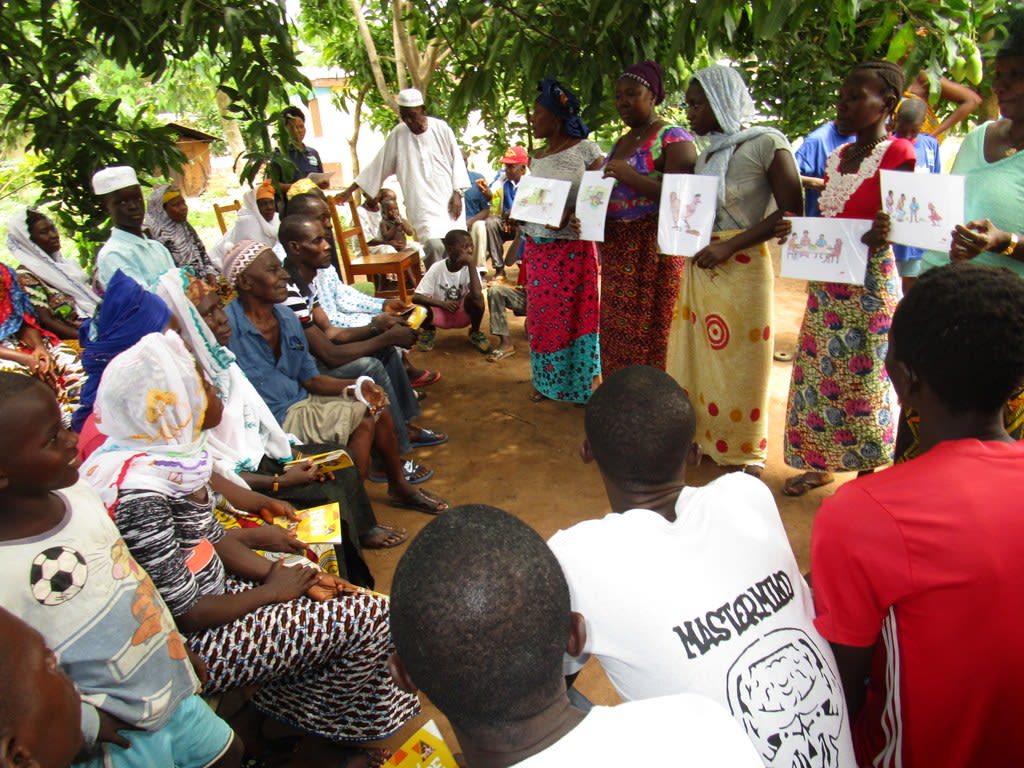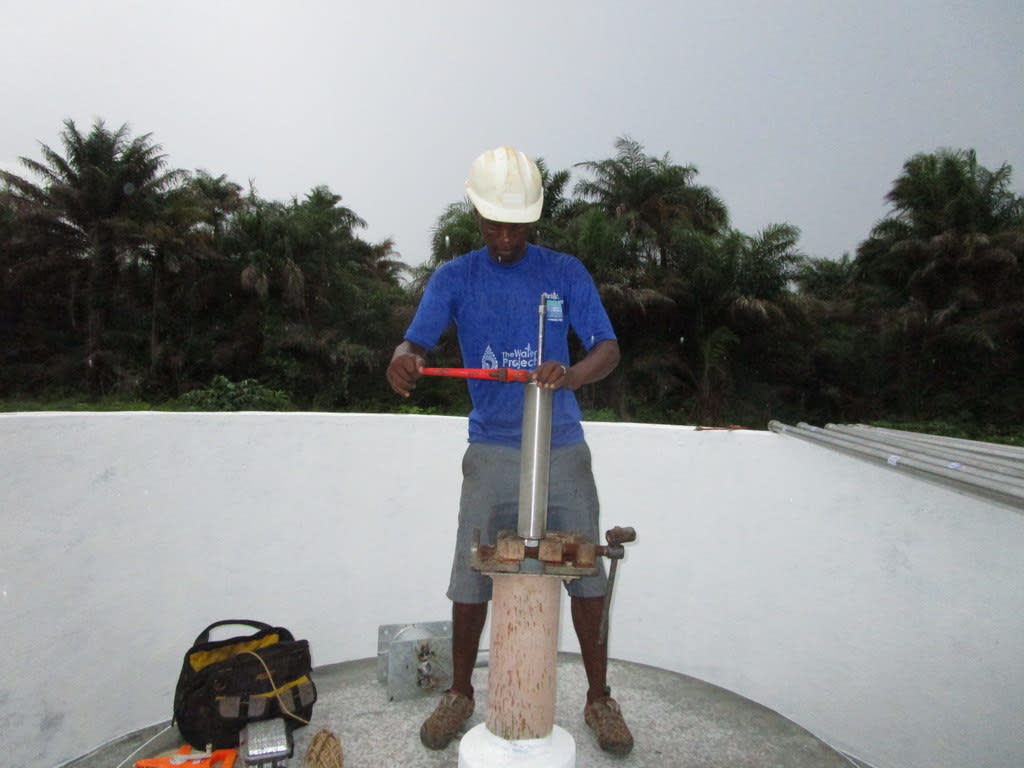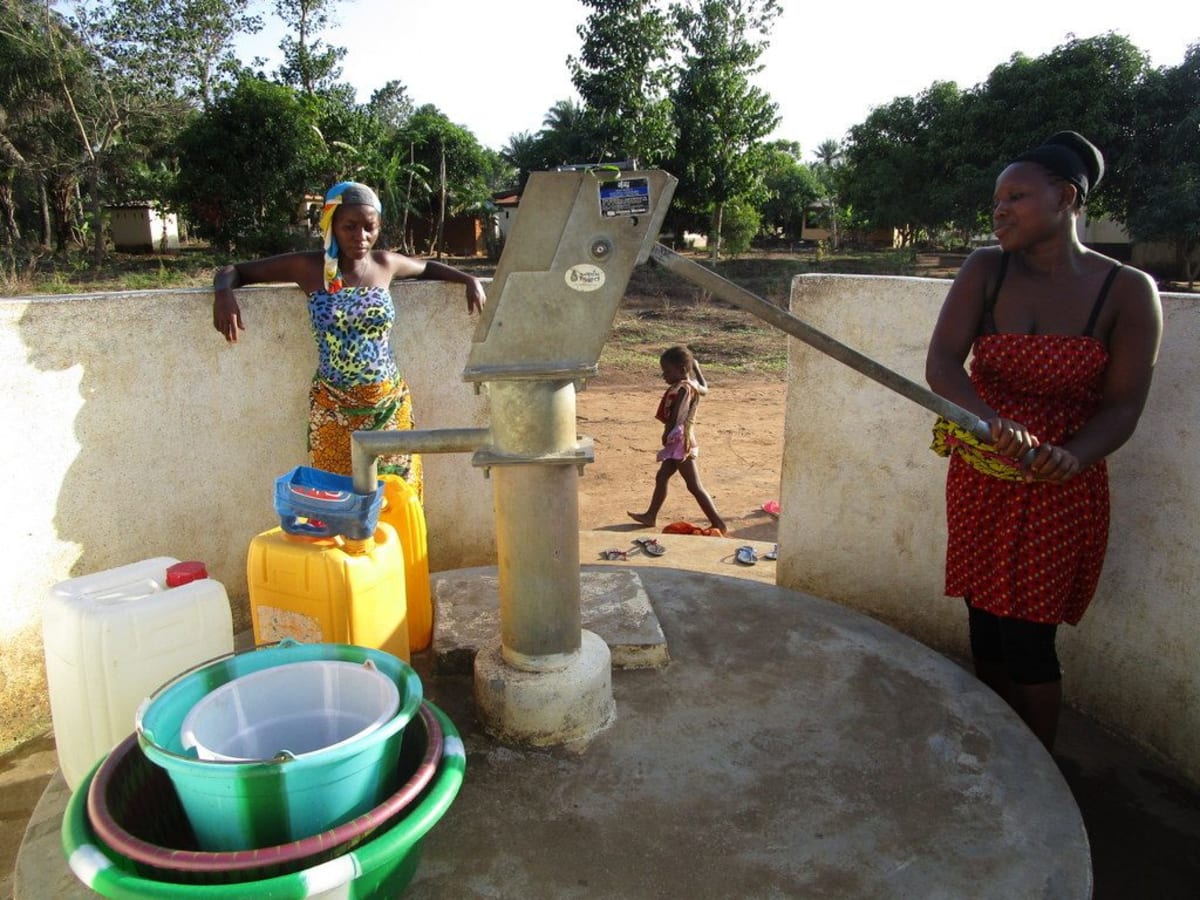This project is a part of our shared program with Mariatu’s Hope of Sierra Leone. Our team is pleased to directly share the below report (edited for clarity, as needed).
Welcome to the Community
This part of Kitonki Community is different from the rest; it is home to Suzanne Village, a camp for the war-wounded.
We first met Siantigie Kamara, one of the men who lives in community with others who struggle with being maimed:
May God bless Suzanne from Norway for building this community for us. Here you will find amputees from all over the country that were afflicted during the war. We will never have normal days again in our sorry lives after what the rebels did to us. I am thirty-five years old now, but I was seventeen years when I had my arm chopped off by a boy no older than twelve years. He must have spent what seems like eternity in chopping my hand off. I don't know whether he enjoyed it, or because he was also forced to do it. If I was in his position what would I have done? Would I chop off the hand of a defenseless man, woman or child? Left with no choice I guess I might have. I can hardly sleep at night thinking about that little boy. I felt sorry for him more than I feel for myself. Our days are filled with thing far away from normal... our days are filled with anger, regret, and more anger. I find myself crying all the time; why did it happen to me? Is it something I did? I later learned from another amputee that bad things do happen to good people. We stay close to each other for comfort and counseling. We are a family now. We depend on our wives and children to put food on the table. I help my wife to tend to the garden of cassava, onions, tomatoes and all other fruits and vegetables. It is better than holding a pan at the street corner to beg.
Water Situation
"The water well that was being used in the community is a protected water well, but because the well was drying too much almost half the year, we were left with no choice but to open the hatch and use a rubber bucket with a rope to fetch the water inside. We now stand on top of the well with our legs spread apart to shoulder width to lower the bucket. Only people with two hands can do this, so our children and wives are our lifesavers," Mr. Kamara said.
At least one person in every household is an amputee. The shortage of a safe water source has caused the residents to settle for whatever water they can get. A person who has lost hope is a person willing to do anything to survive.
We monitor the well described above and noticed the decline during our quarterly visits. In between these visits, we received constant calls from Mr. Kamara.
Sanitation Situation
The sanitation at this camp is much better than most other places in Sierra Leone, bringing comfort to the wounded. The pit latrines and bathing rooms are built from good cement. Some households have helpful tools like dish racks and clotheslines for safely drying belongings, but nobody has a hand-washing station.
Plans: Hygiene and Sanitation Training
There will be hygiene and sanitation training sessions offered for three days in a row.
No hand-washing stations were observed here. After our visit, the hygiene and sanitation trainer decided it would be best to teach community members how to build a tippy tap (a hand-washing station built with a jerrycan, string, and sticks). They will use these tippy taps for hand-washing demonstrations, and will also teach about other tools like dish racks and the importance of properly penning in animals.
These trainings will also strengthen the water user committee that manages and maintains this well. They enforce proper behavior and report to us whenever they need our help solving a serious problem, like a pump breakdown.
Plans: Well Rehabilitation
The well marked for this overhaul is dry for half of every year and needs major work to supply adequate, clean water to the community year round. The pump will be removed, and a man will be lowered inside with a hand auger. This hand auger will allow the team to drill several meters deeper to hit a sufficient water column that will ensure the well supplies water throughout the drier seasons. As the team drills, casing will be installed, transforming this hand-dug well into a pseudo-borehole. PVC piping will connect this lower system directly to the pump, a construction that we know will also improve the quality of water.
Once this plan is implemented, everyone within the community will have access to safe drinking water in both quality and quantity, even through the dry months. This will solve the water shortage for the wounded living in Suzanne Village. The community is relatively small but full of amputees, their movement and work limited because of their conditions. With this well up and flowing with clean water, the children and women will be relieved and have more time to do other chores.

 Protected Dug Well
Protected Dug Well
































